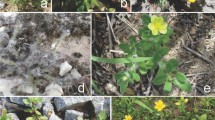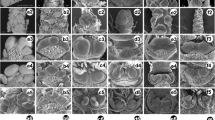Abstract.
The inflorescence development in Whytockia has been studied in order to explore the developmental basis for inflorescence architecture. The developmental pattern of the pair-flowered cyme in Whytockia basically conforms to that of most members in Gesneriaceae. However, the additional flower beside the terminal one in Whytockia is not equivalent to the frontal flower as in other Gesneriaceae because the former is located in the front-lateral position while the latter is in the front-median position. Also, the zigzag monochasial branching system in Whytockia represents the consecutive front-lateral branches rather than the lateral branches as in other Gesneriaceae. The inflorescence in Whytockia is flowering in a basipetal sequence, and its seemingly acropetal flowering sequence is due to the vigorous development of the consecutive front-lateral branches. In addition, the inflorescence of Whytockia does not represent the basic unit of the inflorescence in Epithemateae, and it is derived as compared to that of Rhynchoglossum. The development relationships of the inflorescence between Whytockia and its allies in Epithemateae are discussed on the basis of developmental and comparative evidence.
Similar content being viewed by others
Author information
Authors and Affiliations
Additional information
Received February 15, 2002; accepted September 17, 2002 Published online: December 11, 2002
Rights and permissions
About this article
Cite this article
Wang, YZ., Li, ZY. Inflorescence development of Whytockia (Epithemateae, Gesneriaceae) and phylogenetic implications within Gesneriaceae. Plant Syst. Evol. 236, 45–54 (2002). https://doi.org/10.1007/s00606-002-0234-9
Issue Date:
DOI: https://doi.org/10.1007/s00606-002-0234-9




